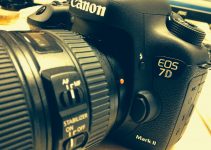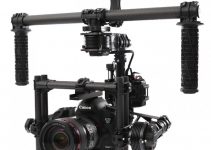Fast storage is one of the better ways to improve editing performance. Sometimes the stuttering or delays you get aren’t because the computer itself is struggling, it’s because the drive can’t feed the data fast enough.
This is becoming more important as larger projects and video files mean that most filmmakers are relying on external storage instead of the faster internal drives. With fast drives being expensive, one option to consider is building your own DIY SSD.
Filmmaker Richard Lau, coming via Josh Olufemii’s channel, has a quick and easy DIY tutorial on how to build your own fast portable external SSD on the cheap. If you are still working with big spinning drives you should jump on this ASAP.
Seriously, Lau emphasizes that you need to switch to SSDs. There is also a relatively new type of SSD which promises faster speeds: NVMe. Commonly found in the M.2 form factor, these interface more directly with your computer by using a PCIe bus. This means that you can get speeds that blow away traditional storage like SATA.
For example, a new PCIe 4.0 NVMe SSD can hit theoretical read speeds of up to 7,000 MB/s, while a SATA III SSD is only around 500-600 MB/s. It’s a huge improvement you will see in the real world, though more practically around 1,000 to 2,000 MB/s with more affordable drives.
These drives get expensive and building out a new computer that supports it is going to be costly. And some computers don’t even support it natively just yet. On top of all that, if you need to be more mobile or switch between computers or users than internal storage isn’t a good solution. Save some money and build your own.
Build is almost too strong a word in my opinion, it is simply taking some key parts you can get from most electronics retailers and putting them together. So don’t be afraid.
The two parts you’ll need are a fast NVMe SSD and an external enclosure. You’ll want to pick something with a faster Thunderbolt 3 interface or better. This is what will ensure you actually get the speeds you want out of the drive.
Installing the drive is a piece of cake. Open up the enclosure, slide the drive into the slot at a 45-degree angle and then use the screw to hold it down. Check the SSD’s instructions as well because some come with additional cooling pads to install which will help ensure consistent performance and extend the drive’s lifespan.
That’s it. Really. Compared to the prices of external Thunderbolt 3 SSDs with similar performance the DIY method is notably cheaper.
Here are some good picks for NVMe SSDs and their best price points (subject to change):
- Inland Professional 1TB 3D NAND NVMe M.2 Internal SSD
- Samsung 1TB 970 EVO NVMe M.2 Internal SSD
- Sabrent 1TB Rocket NVMe PCIe 4.0 M.2 2280 Internal SSD
- Samsung 1TB 980 PRO PCIe 4.0 x4 M.2 Internal SSD
Considering you want to use this for film projects, I’d personally steer clear of the Inland model and upgrade to the Samsung at the very least. I’ve heard very good things about the Samsung drives and would trust them – plus you get a speed boost.
Moving up is also nice, but you are paying for more speed and it really depends on what you need. More speed is obviously better, unless you don’t need it and are just paying for performance you won’t be getting.
To get to ~1,000 MB/s in a pre-built drive, such as the Samsung 1TB T7 Portable SSD, you’ll be paying upwards of $150 even when it’s on sale. Even the base Inland drive is hitting read speeds of 1,900 MB/s for the same price.
When you are looking for an external enclosure, I would recommend the OWC Envoy Express Thunderbolt 3 NVMe Enclosure. It’s good and from a brand I trust, plus it’s Thunderbolt. It appears the model used in the video is an Orico which I could only find in USB 3.2 Gen 2 versions, still very fast and a little more affordable if you are doing this on a budget.
Definitely, a nice little trick and one other consideration is that you can easily upgrade the drive in the enclosure later on, so you don’t have to keep buying new enclosures all the time and that should save money over time. Just find a good way to archive the old projects.
[source: Josh Olufemii]
Order Links:
- Inland Professional 1TB 3D NAND NVMe M.2 Internal SSD (Amazon)
- Samsung 1TB 970 EVO NVMe M.2 Internal SSD (B&H, Amazon)
- Sabrent 1TB Rocket NVMe PCIe 4.0 M.2 Internal SSD (B&H, Amazon)
- Samsung 1TB 980 PRO PCIe 4.0 x4 M.2 Internal SSD (B&H, Amazon)
- Samsung 1TB T7 Portable SSD (B&H, Amazon)
- OWC Envoy Express Thunderbolt 3 NVMe SSD Enclosure (B&H)
- ORICO USB 3.2 Gen 2 NVMe SSD Enclosure (Amazon)
Disclaimer: As an Amazon Associate partner and participant in B&H and Adorama Affiliate programmes, we earn a small comission from each purchase made through the affiliate links listed above at no additional cost to you.



